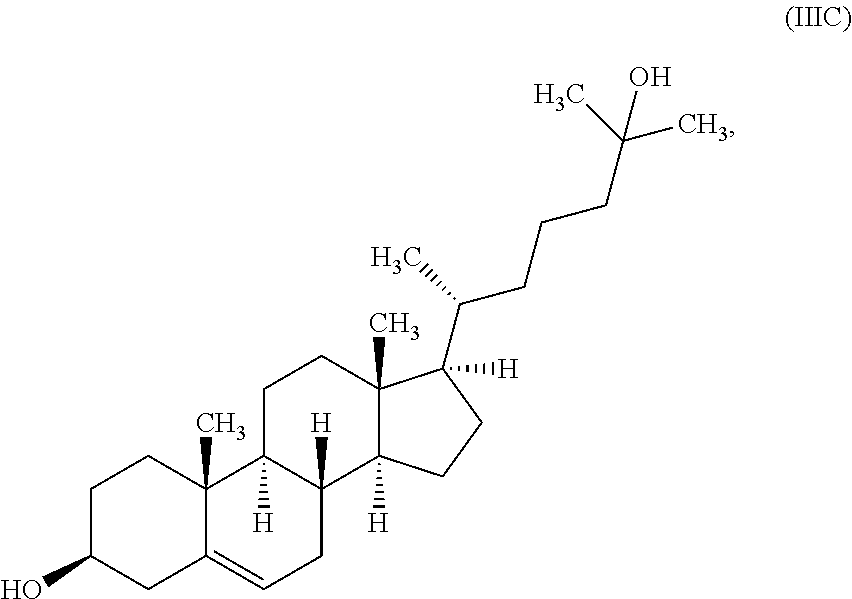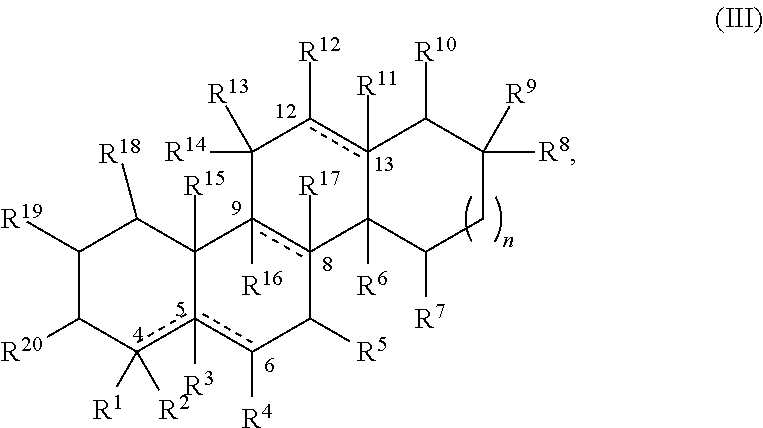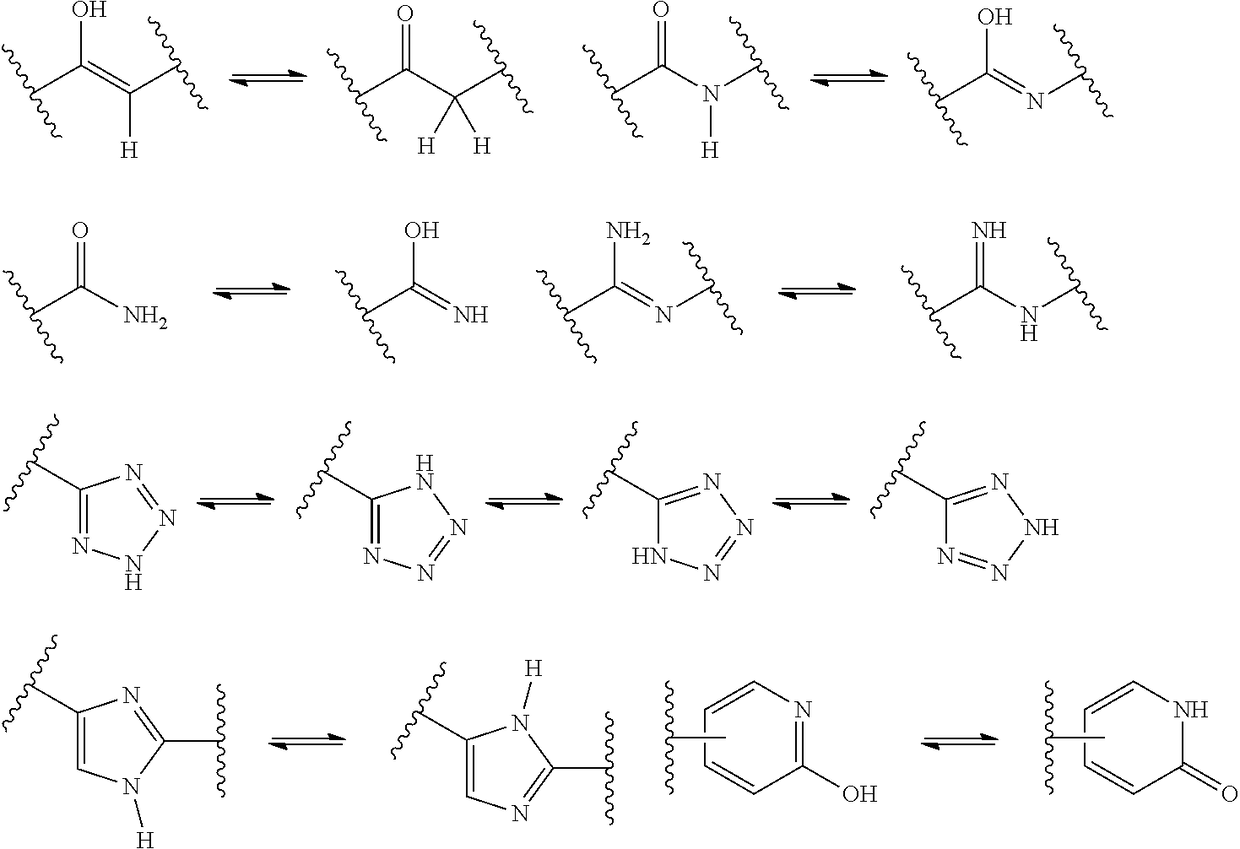Compounds and formulations for treating ophthalmic diseases
- Summary
- Abstract
- Description
- Claims
- Application Information
AI Technical Summary
Benefits of technology
Problems solved by technology
Method used
Image
Examples
example 1
ive Examples of Formulations
[0289]Illustrative formulations that can be used in a method of the invention are shown in TABLE 2 below:
TABLE 2Concentrationof compoundDose form(C29)ExcipientsFormAqueous0.04% (1 mM)2-hydroxypropyl-β-SolutionsolutioncyclodextrinOintment0.4% and 4%Petrolatum,Anhydrous,lanolin,dissolved inmineral oiloleaginousphaseAqueous0.3% and 3%Gellan gum,~500 nMsuspensiontromethamine,particlemannitol,suspensionboric acid,polysorbate-80,benzalkoniumchlorideOil in water0.06% and 0.6%isopropyl palmitate,solution innanoemulsionpolysorbate-80oil phase; ~50nM droplets
example 2
inetic Studies
[0290]To test the efficacy of a compound of the invention, a bioanalytical method was employed to allow for pharmacokinetic studies. The bioanalytical method was sensitive at a scale of about 15 nM of the compound in plasma, and about 20 nM of the compound in ocular tissues. New Zealand white rabbits were given six doses over three days for each topical arm, and a single injection for intravitreal and intracameral injections, with time points at two hours and 24 hours post-injection.
Lens Exposure of the Topical Agents
[0291]The exposure of a compound of the invention (C29) was measured in the lens of the rabbits, which can display slow diffusion because the lens is a protein-rich, dense tissue area in the anterior of the eye. Ciliary process levels were used as a measure of exposure of the compound in the lens. TABLE 3 below and FIG. 4 display the results of the experiments.
TABLE 3Ciliary processFormulationDoselevels (nM)Cyclodextrinb.i.d. for 14 daysnMOintmentb.i.d. fo...
example 3
ve Formulation Study in Rabbits
[0297]New Zealand white albino rabbits were used to test different formulations and routes of administration of a compound of the invention. The rabbits were given six doses over three days for each topical arm, and a single injection for intravitreal and intracameral injections, with time points at two hours and 24 hours post-injection.
[0298]The control formulation tested was an aqueous solution containing 0.04% of the compound in 8% 2-hydroxypropyl-β-cyclodextrin.
[0299]The ointment formulation contained 4.3% lanolin, 9.9% light mineral oil, 85.9% white petrolatum, and either 0.4% or 4% of the compound. In this formulation, the addition of the mineral oil was able to decrease the melting point and improve the fluidity of the ointment for easy expulsion from the storage tube. The lanolin was used to solubilize the compound.
[0300]The aqueous suspension was developed as a gellan gum-based suspension of about 500 nm-sized particles, 0.6% gellan gum (low a...
PUM
| Property | Measurement | Unit |
|---|---|---|
| Fraction | aaaaa | aaaaa |
| Time | aaaaa | aaaaa |
| Time | aaaaa | aaaaa |
Abstract
Description
Claims
Application Information
 Login to View More
Login to View More - R&D
- Intellectual Property
- Life Sciences
- Materials
- Tech Scout
- Unparalleled Data Quality
- Higher Quality Content
- 60% Fewer Hallucinations
Browse by: Latest US Patents, China's latest patents, Technical Efficacy Thesaurus, Application Domain, Technology Topic, Popular Technical Reports.
© 2025 PatSnap. All rights reserved.Legal|Privacy policy|Modern Slavery Act Transparency Statement|Sitemap|About US| Contact US: help@patsnap.com



